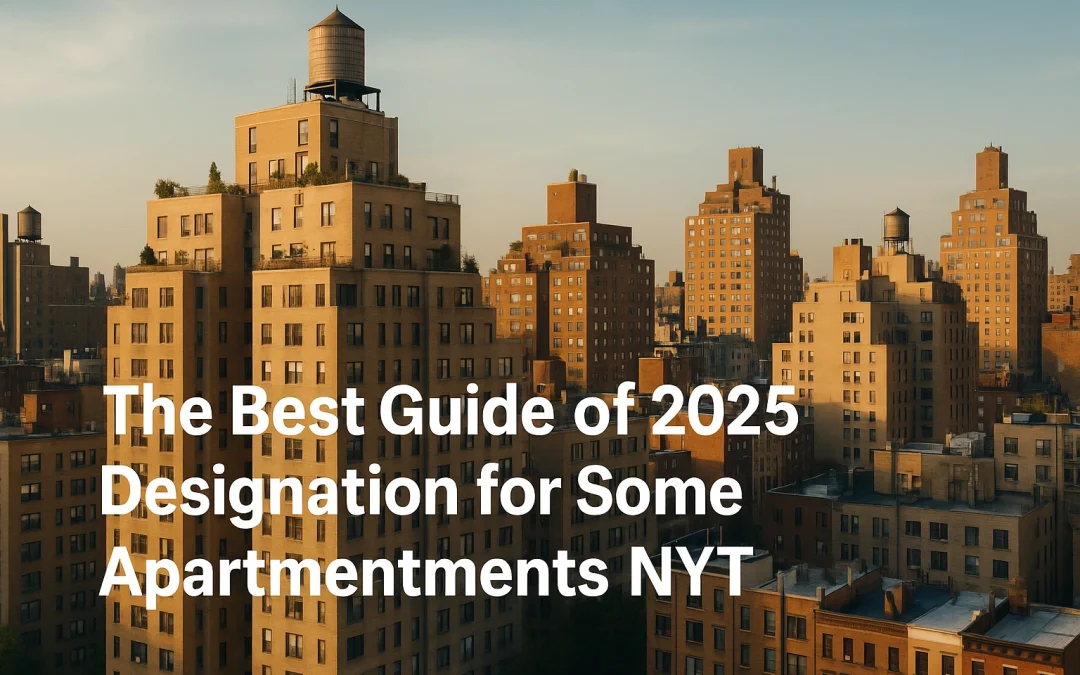Introduction: Understanding Designation for Some Apartments NYT
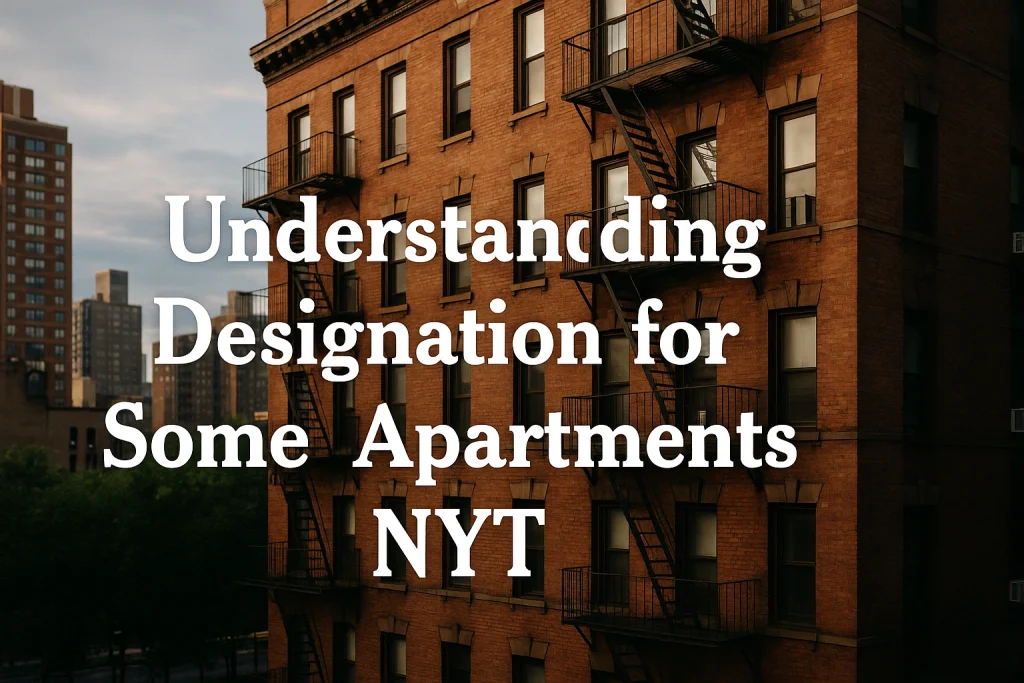
The phrase designation for some apartments NYT has recently caught the attention of crossword enthusiasts and curious readers alike. Appearing in The New York Times crossword puzzle on January 4, 2025, this clue intrigued solvers with its layered meaning. While it seems straightforward at first glance, it reflects more than just a simple answer — it connects linguistic creativity, housing terminology, and real-world context. The correct solution to the clue was LOW-INCOME, a term that carries both social and economic significance beyond its crossword grid.
In crossword construction, clues like this one highlight the intersection between everyday language and specialized knowledge. Designation for some apartments doesn’t just refer to a random label; it mirrors the classifications used in the housing sector to define apartments based on income eligibility, subsidies, and affordability programs. This thoughtful wordplay transforms a policy term into an engaging puzzle challenge.
Exploring this clue opens a broader discussion about how apartment designations shape communities, influence accessibility, and reflect government and market efforts to make housing affordable. The concept of low-income apartments represents more than a definition — it’s a social mechanism aimed at providing equitable living opportunities. Within the NYT crossword, it becomes a clever reminder of how language connects complex realities to concise expressions.
In the sections that follow, this article delves into the origins of the crossword clue, the reasoning behind its answer, and the wider implications of apartment designations in housing policy. Whether you’re a crossword solver seeking clarity or a reader interested in urban living terminology, understanding the phrase designation for some apartments NYT provides valuable insight into both linguistic design and real-world relevance.
2. The Crossword Context: How the Clue Appears in the NYT

The clue designation for some apartments NYT first appeared in The New York Times crossword on January 4, 2025, and immediately caught the attention of solvers due to its layered, yet deceptively simple phrasing. Crossword puzzle creators — often referred to as constructors — are known for blending wit, wordplay, and a mix of general and specialized knowledge. In this case, the clue draws from the domain of housing terminology, a field not typically associated with word games, which makes it stand out.
What makes this particular clue interesting is how it plays on the dual meaning of designation. To the casual reader, it may suggest a label, category, or status — and that’s precisely where the trick lies. In housing policy, a designation is a specific classification that determines who can live in a particular apartment, often based on income level, subsidies, or local regulations. By using the phrase “some apartments,” the clue subtly directs solvers to think of a category of housing that differs from standard market-rate units.
After analyzing the structure and wording, experienced solvers identified that the answer must describe a class or type of apartment rather than a location or name. The answer, LOW-INCOME (sometimes written with a hyphen as low-income), fits perfectly — it’s nine letters long and exactly matches the clue’s definition: a designation applied to certain apartments reserved for residents who meet income eligibility requirements.
This type of clue exemplifies how The New York Times crossword often weaves real-world terminology into linguistic puzzles. It invites players to make connections between different domains — in this case, social housing policy and everyday language. Such clues require both vocabulary awareness and conceptual reasoning: knowing not just what words mean, but what they imply in different contexts.
From an SEO perspective, content built around the query designation for some apartments NYT crossword targets a highly specific yet consistent search intent. Thousands of crossword enthusiasts search daily for explanations, answers, and meanings behind recent NYT clues. Creating detailed, high-quality content around these topics does more than supply an answer — it provides insight into how the clue was crafted, why the answer fits, and what cultural or thematic depth lies beneath the puzzle surface.
In essence, the designation for some apartments clue exemplifies the art of crossword design: transforming a simple phrase into a bridge between language, logic, and life. It shows how even a single crossword entry can spark curiosity about real-world systems — like how apartment classifications work — and demonstrates why The New York Times crossword remains one of the most intellectually engaging puzzles of all time.
3.The Answer Explained: LOWINCOME — Meaning and Real-World Relevance
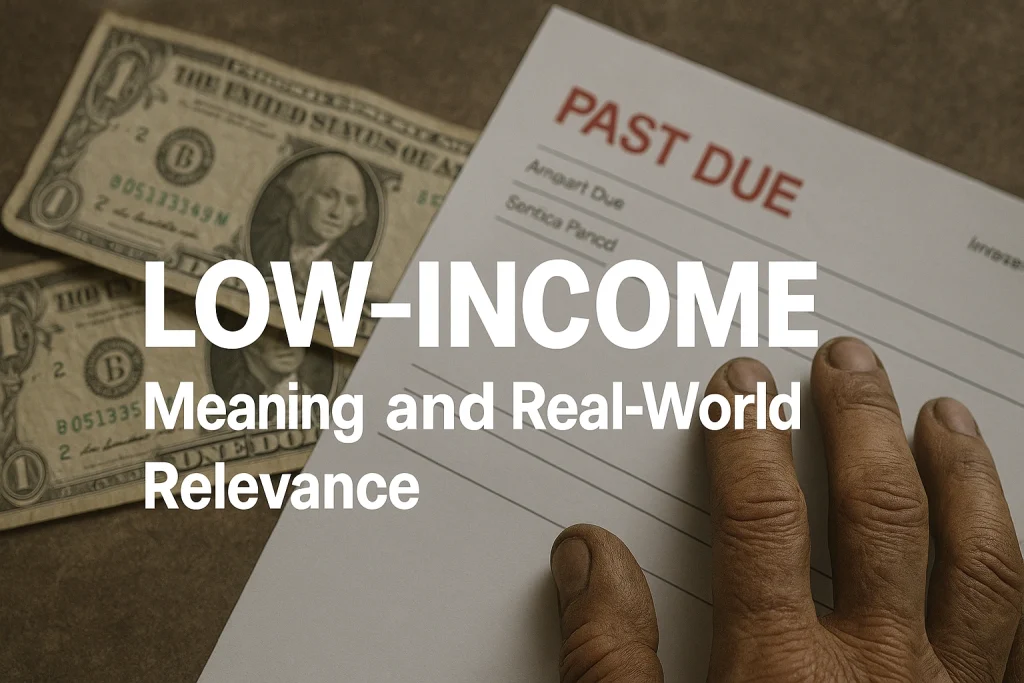
The answer to the crossword clue designation for some apartments NYT is LOW-INCOME — a nine-letter term that encapsulates far more than a simple housing label. In the context of The New York Times crossword, this answer fits both the literal definition of “designation” and the cultural reality it represents. But beyond the grid, low-income is a term with significant implications in housing policy, economics, and social welfare.
3.1 Understanding the Meaning of LOW-INCOME
Low-income apartments are residential units specifically designated for tenants whose household earnings fall below a certain threshold. These thresholds are often set relative to the Area Median Income (AMI) — a benchmark used by housing authorities to determine affordability levels. For example, an apartment might be reserved for individuals earning 60% or less of the AMI, meaning only those within that income range are eligible to rent the unit.
Such designations are part of broader affordable housing initiatives designed to ensure that lower-income individuals and families have access to safe, stable, and affordable housing. Rent in these units is typically capped based on income levels or determined by formulas established through federal, state, or local programs.
3.2 Low-Income Apartments in Housing Programs
Low-income apartments can be developed or managed under various government or nonprofit programs, such as:
-
Low-Income Housing Tax Credit (LIHTC) program — a federal initiative that incentivizes developers to create affordable housing through tax benefits.
-
Public Housing Programs managed by local housing authorities, offering subsidized rent directly to qualifying tenants.
-
Section 8 Housing Choice Vouchers, which help eligible households afford rent in private market apartments by covering a portion of the rent.
These programs use low-income as a formal designation, often attached to property records, leasing agreements, and eligibility criteria. In that sense, the crossword clue cleverly mirrors bureaucratic language — designation for some apartments literally describes how these properties are labeled in the real world designation for some apartments nyt.
3.3 Linguistic Insight: Why the Clue Works
From a linguistic perspective, the clue plays with syntactic pattern recognition, prompting solvers to mentally fill in the blank: _____ apartments.The phrasing suggests a descriptive modifier — a word that specifies what kind of apartments are being referenced. The term low-income fits perfectly because it describes a subset some apartments and serves as a formal classification designation.
What makes this clue elegantly crafted is how it operates on two levels:
- Literal accuracy – Low-income is an official designation applied to certain apartments.
- Wordplay precision – The clue doesn’t overcomplicate; it uses simple phrasing that hides a precise, policy-driven answer beneath everyday language.
3.4 Cultural and Social Significance
Beyond wordplay, the phrase low-income apartments highlights a deeper narrative about housing equity. These designations exist to promote inclusive development and prevent economic segregation in cities. They aim to balance housing availability, ensuring that people from different income brackets can live within the same communities.
In cities like New York, Los Angeles, and Chicago, low-income housing plays a vital role in stabilizing rent prices and offering opportunities for residents who might otherwise be priced out of their neighborhoods. By bringing such terminology into the crossword world, The New York Times not only tests solvers’ vocabulary but also subtly raises awareness about social realities embedded in our language.
3.5 Why LOW-INCOME Fits Perfectly as a Crossword Answer
-
Letter count: Nine letters, matching the clue’s space requirement.
-
Direct definition: A designation applied to some apartments.
-
Common usage: Widely recognized term, yet precise enough to feel rewarding when solved.
-
Broader resonance: Connects linguistic simplicity with social complexity — a hallmark of NYT crossword craftsmanship.
In summary, LOW-INCOME is more than an answer — it’s a reflection of how puzzles can mirror real-world systems. The clue demonstrates how everyday terms tied to policy and community life find their way into the cultural lexicon through something as accessible and enduring as a crossword puzzle.
4.Apartments with a Designation: What Low-Income Means in Housing
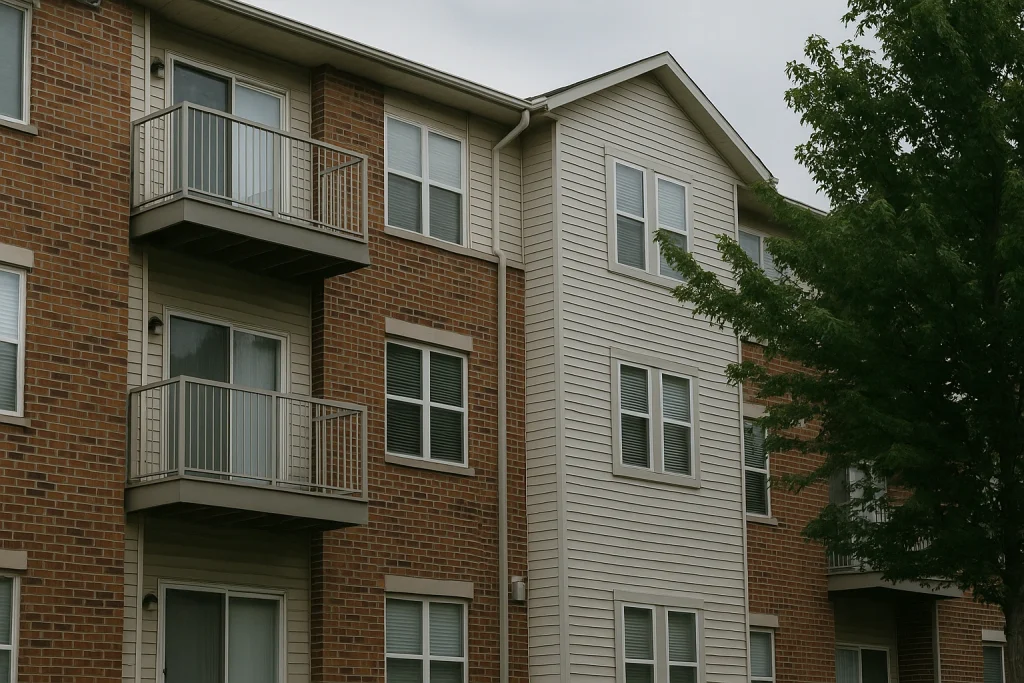
4.1 Government Definitions & Eligibility
When an apartment is designated as low-income, it typically implies that:
-
The household’s income falls below a specific threshold e.g., low-income limit set by HUD or local housing authority.
-
There may be rent restrictions, meaning the rent is tied to the tenant’s income or capped at a percentage of their income.
-
The unit is part of a program such as the Low-Income Housing Tax Credit LIHTC, public housing, or other affordable housing schemes.
Understanding eligibility helps aspiring renters and researchers alike.
4.2 Subsidized vs. Non-Subsidized Low-Income Apartments
Not all low-income designated apartments are identical. Some are subsidized—the property owner receives government aid and must set aside units for qualifying tenants. Others might be income-restricted, where private developers commit to offering below-market rents in exchange for incentives.
Knowing the difference is helpful when reading listings labelled low-income, income-restricted, or affordable.
4.3 How to Search for Low-Income Apartments
If you are searching for apartments with a low-income designation:
-
Look for keywords like income-restricted, low-income housing, affordable units, 60% AMI, etc.
-
Use listing platforms that filter by eligibility or income caps.
-
Check with local housing authorities about waitlists for income-restricted units.
This also feeds into how the term appears in web searches, which is relevant for SEO when people query terms like low income apartments designation.
5.Broader Apartment Designation Terms You Should Know
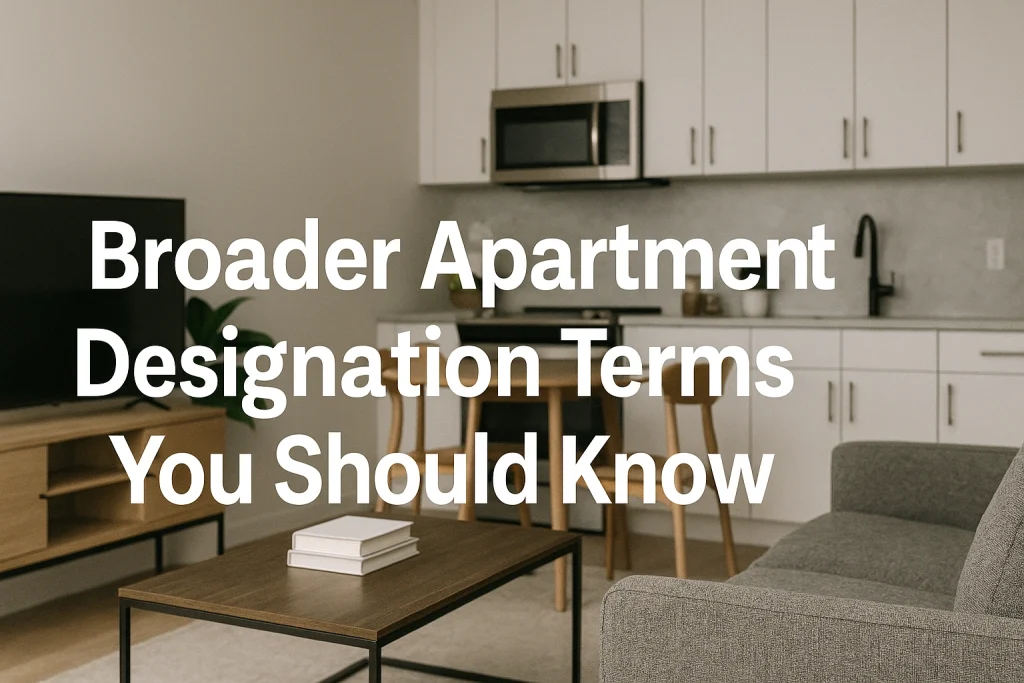
5.1 Affordable Housing Designation
Beyond low-income, the term affordable housing designation covers apartments reserved for households earning up to a higher % of AMI, for example 80% or 120%. This is relevant when broader designation terms are used.
The semantic relation: low-income ⊂ affordable housing designation for some apartments nyt.
5.2 Rent-Controlled / Income-Restricted Apartments
Other designations include rent-controlled, rent-stabilized, or income-restricted. These differ in mechanism (rent caps vs eligibility) but serve a similar role of classifying apartments by regulatory status.
This helps broaden the article’s reach to people searching beyond the exact crossword clue designation for some apartments nyt.
5.3 Inclusionary Zoning & Designation Programs
In some jurisdictions, programs like Inclusionary zoning require new developments to include a percentage of affordable units. These are designated apartments too—connecting back to designation for some apartments. Try Hard Guides
By including this, the article delivers value to readers beyond just the crossword answer.
6.Why Such Clues Appealed to the NYT Crossword Audience
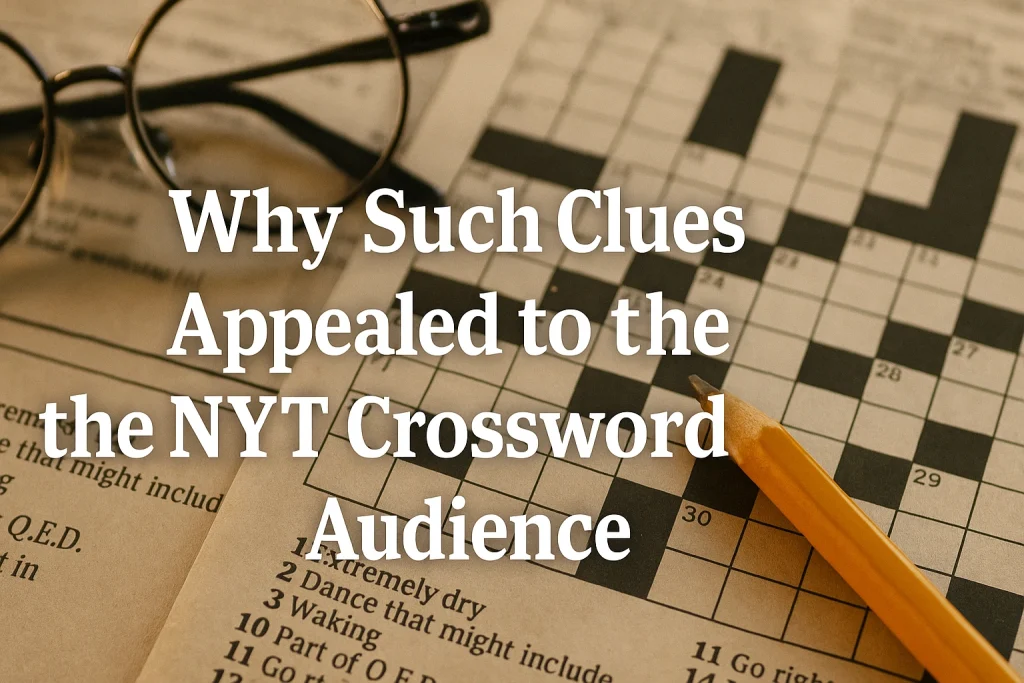
6.1 The Role of Housing Terminology in Crosswords
Crossword constructors like to use phrases that have a clear meaning but also can be clued in a clever or slightly disguised way. Designation for some apartments is a clue where the solver needs to recognize that apartments can carry a designation i.e., low income, rather than a literal: apartment name.
This kind of clue taps into housing terminology in a clever way.
6.2 How Puzzle Solvers Interpret designation for some apartments
Puzzle solvers would see that some apartments refers not to all apartments but a subset. The word designation points to classification or label. Recognizing that low-income apartments are a well-known classification leads to the answer.
Providing an explanation of that logic helps readers who arrive via the SEO keyword and strengthens content engagement (good for SEO).
7.SEO Insights: How to Use This Keyword Opportunity

7.1 Keyword Strategy for Crossword-Answer Content
Since users typing designation for some apartments NYT are looking for a quick answer, your content should at minimum give the answer near the top: LOW-INCOME. Then you expand with explanation and context to add value.
Use the exact phrase in the title, early in content, in H2s, and sprinkled naturally within ~3-4% density. Avoid stuffing; keep it natural.designation for some apartments nyt
7.2 How to Balance Niche Traffic and Broader Housing Interest
By starting with the niche crossword audience and expanding into broader housing topics low-income, affordable housing, designations, you capture both high-intent niche traffic and higher-volume broader traffic.
This dual strategy supports longer-term SEO value beyond just a one-time puzzle answer.
7.3 Content Structure Ideas and Internal Linking
-
Use a FAQ section (section 8) to answer common related questions – good for People also ask snippets.
-
Link to authoritative external resources (e.g., HUD, local housing authorities) — helps credibility/E-A-T.
-
Internally link to other articles you may have on housing designations, apartment search tips, etc.
-
Use tables and bullet-lists (as we are doing) for readability.
-
Ensure meta description and headings include the focus keyword and related terms.
8.Frequently Asked Questions (FAQs)

8.1 What exactly does low-income apartments mean?
Low-income apartments are residential units that are made available to households whose income is below a specific threshold, often set relative to the Area Median Income (AMI). They frequently involve rent-limits, income verification, and eligibility criteria.
These apartments may be operated by public housing authorities, non-profits, or private developers under a regulatory agreement.
8.2 Can an apartment lose its designation?
Yes — an apartment complex may lose its income-restricted status if the regulatory agreement expires, the property is sold, or the owner converts the units to market rate. It’s crucial to check the term of any low-income designation and whether it is ongoing.
8.3 How do I know if an apartment is labeled low-income / income-restricted?
You can check:
-
The listing should mention income-restricted, reserved for households earning ≤ X% AMI, or low-income units available.
-
Contact the property or housing authority for verification.
-
Review the lease or regulatory agreement language.
-
Use local housing authority websites that list income-restricted properties.
9.Conclusion: Insights Beyond Designation for Some Apartments NYT
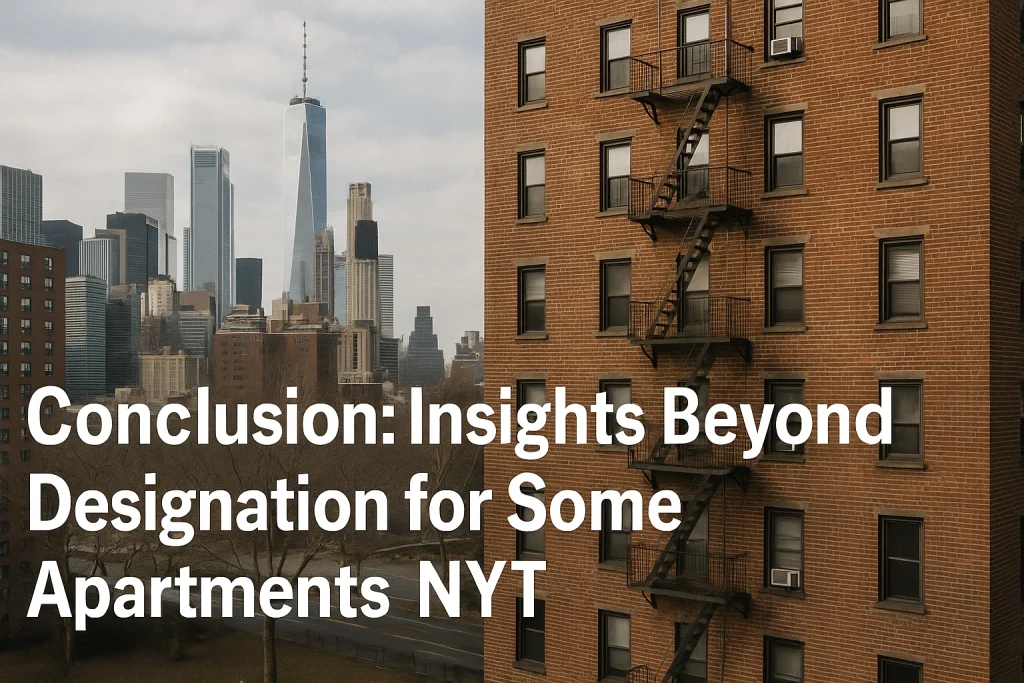
The crossword clue designation for some apartments NYT may appear to be a small linguistic puzzle, but it’s answer — LOW-INCOME — opens a window into far greater social and economic realities. Within the grid of a New York Times crossword, this phrase captures how language and policy intersect: what starts as a clever wordplay reflects a real system of housing classifications that define accessibility, affordability, and social responsibility in modern urban life.
Understanding this clue means understanding more than a nine-letter answer. It reveals the way apartment designations such as low-income, affordable, rent-controlled, or income-restricted shape communities and housing opportunities. These classifications aren’t merely bureaucratic labels; they determine who can live where, how much they can afford to pay, and what level of support a city or government provides to make housing equitable.
From an SEO and content strategy perspective, the phrase designation for some apartments NYT offers a unique opportunity to bridge two audiences:
-
Puzzle solvers, who are actively searching for quick, accurate answers to specific NYT crossword clues.
-
Readers interested in housing and policy, who seek clarity about the meaning and implications of apartment designations.
By weaving these two threads together, a content creator can attract high-intent, low-competition keyword traffic while also establishing topical authority on affordable housing terminology. This dual focus transforms a seemingly narrow topic into evergreen, valuable content that satisfies both curiosity and comprehension.
Ultimately, the takeaway is simple yet strategic: always answer the searcher’s immediate query — here, that designation for some apartments equals LOW-INCOME — but enrich that answer with context, data, and meaning. Offer readers insight into why the term matters, how it functions in real life, and what broader lessons it teaches about language, policy, and accessibility.
That’s the difference between content that merely ranks and content that truly resonates.

